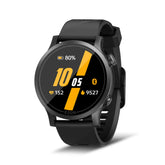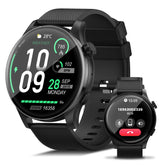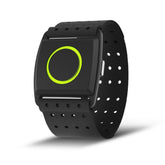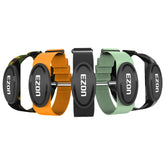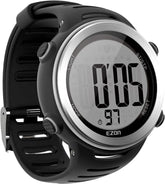Stress Relief through Sports: A Guide to Using Wearables for a Calmer You
In a world filled with constant demands, stress can feel overwhelming—but sports and wearable technology offer a powerful antidote. This guide explores how sports watches and heartbeat monitors transform exercise into a stress-busting tool, combining data-driven insights with proven stress relief strategies to boost mental well-being. Discover how to train with purpose, recover with intention, and let technology guide you to a calmer, more resilient self.
1. The Science of Stress and Exercise
A. How Sports Fight Stress
- Cortisol Regulation: Moderate exercise reduces cortisol (the stress hormone) by 15–20%, according to a 2023 study in Nature Mental Health.
- Endorphin Release: Aerobic activity triggers endorphins, creating the “runner’s high” that elevates mood and reduces anxiety.
- Heart Rate Variability (HRV): Higher HRV signals better stress resilience—wearables track this metric to gauge your body’s readiness to handle pressure.
B. The Role of Wearables
- Real-Time Stress Scoring: Many digital sports watches (e.g., EZON Heart Rate Series) calculate stress levels using HRV and heart rate, alerting you when tension rises.
- Recovery Guidance: Use data to balance intense workouts with gentle recovery sessions, preventing burnout.
2. Stress Relief Workouts: Match Activity to Your Stress State
A. High-Stress Days: Calm with Mindful Movement
Yoga & Pilates (Zone 1–2, 50–70% Max HR)
- Why It Works: Slow, controlled movements activate the parasympathetic nervous system (rest-and-digest mode), lowering heart rate and muscle tension.
- Wearable Tip: Use a heartbeat monitor to ensure your heart rate stays below 70% max HR—pair with guided breathing exercises on your watch (e.g., 4-7-8 technique).
Nature Walks (Zone 1, 50–60% Max HR)
- Benefits: 20 minutes in green spaces reduces cortisol by 12% (University of Michigan study); your watch’s GPS tracks steps and elevation for gentle accountability.
B. Medium-Stress Days: Release Tension with Aerobics
Steady-State Cardio (Zone 2, 60–70% Max HR)
- Activities: Cycling, swimming, or brisk walking for 45–60 minutes—ideal for busy minds needing rhythmic, repetitive motion.
- Data Focus: Aim for a “conversational pace” (you can speak in full sentences), confirmed by your watch’s heart rate zone alerts.
Dance Workouts (Zone 3, 70–80% Max HR)
- Why It Works: Fun, unstructured movement releases endorphins while distracting from stressors; use a digital sports watch to track calorie burn and keep sessions engaging.
C. Low-Stress Days: Build Resilience with Intensity
HIIT (Zone 4–5, 80–100% Max HR)
- Protocol: 20 seconds sprint + 40 seconds rest, 8–10 rounds—short bursts boost cardiovascular health and mental toughness.
- Wearable Insight: Monitor post-workout HR recovery (heart rate should drop 20 BPM/min)—slower recovery signals the need for more rest.
Strength Training (Zone 3, 70–80% Max HR)
- Compound Moves: Squats, deadlifts, and push-ups—lifting weights reduces stress by regulating cortisol spikes, especially when paired with 60–90 seconds of rest between sets.
3. How Wearables Enhance Stress Relief
A. Key Features to Look For
| Feature | Stress Relief Benefit | Example (EZON Watches) |
|---|---|---|
| HRV Monitoring | Tracks stress resilience; low HRV = need for rest | Real-time stress score (1–100) on watch face |
| Sleep Staging | Ensures 7–9 hours of sleep for cortisol regulation | Deep sleep analysis and bedtime reminders |
| Guided Workouts | Structured stress-busting routines (yoga, walks) | Preloaded recovery workouts with step-by-step cues |
| Sedentary Alerts | Encourages movement during high-stress workdays | Vibration alerts after 60 minutes of inactivity |
B. Daily Stress Management Routine
- Morning (7–8 AM): 10-minute guided breathing (watch-led) + 20-minute walk (track steps and HRV).
- Midday (12–1 PM): 15-minute desk stretches + check stress score (if >70, take a 5-minute outdoor break).
- After Work (6–7 PM): 30-minute workout (yoga or cycling), using your sports watch to stay in Zone 2–3.
- Evening (9–10 PM): Foam rolling + review daily HRV trend—adjust tomorrow’s plan if recovery is low.
4. Choose the Right Wearable for Your Needs
A. For Mindful Movement Enthusiasts
- Priority Features: HRV tracking, guided breathing, sleep analysis.
- 推荐: EZON Heart Rate Series—compact design with 24/7 stress monitoring.
B. For Active Stress Relievers
- Priority Features: GPS, heart rate zones, long battery life (40+ hours for multi-day use).
- 推荐: EZON GPS Series—ideal for runners, cyclists, and outdoor adventurers.
C. For Desk Workers
- Priority Features: Sedentary alerts, quick recovery workouts (10-minute routines).
- 推荐: EZON Smart Watch—discreet design with customizable activity goals.
5. Common Stress Relief Mistakes to Avoid
- Overtraining to “Burn Off Stress”: High-intensity workouts without recovery increase cortisol—use your watch’s stress score to balance effort.
- Ignoring Sleep: Poor sleep (less than 7 hours) negates exercise benefits—use your wearable’s sleep tracking to prioritize rest.
- One-Size-Fits-All Workouts: Tailor activity to your daily stress state (e.g., yoga on high-stress days, HIIT on low-stress days).
6. FAQs: Your Stress Relief Questions Answered
Q: Can I use a sports watch for stress relief without exercising?
- Yes! Many watches offer stress-scoring and breathing exercises for non-active moments (e.g., during work breaks).
Q: How often should I check my stress score?
- 2–3 times/day (morning, post-workout, evening) to understand patterns and adjust habits.
Q: What’s the best exercise for immediate stress relief?
- 10 minutes of rhythmic movement (jumping jacks, dancing, or even stair climbing) to boost endorphins quickly.
Train Your Way to a Calmer Life
With the right sports watches and heartbeat monitors, stress relief becomes a science—one guided by data, not guesswork. Whether you’re flowing through yoga, crushing a HIIT session, or simply walking in nature, let wearables be your partner in balancing effort and ease.
Remember, stress relief is not about perfection; it’s about consistency. Use your device to track progress, honor your body’s needs, and celebrate small wins (e.g., a higher HRV score or a stress score drop). Gear up, move mindfully, and let every workout be a step toward a calmer, more centered you.
EZON Watch: Professional sports technology brand
https://ezonwatch.com
https://ezonwatch.com
